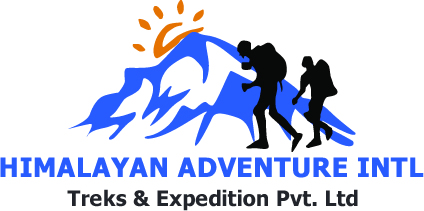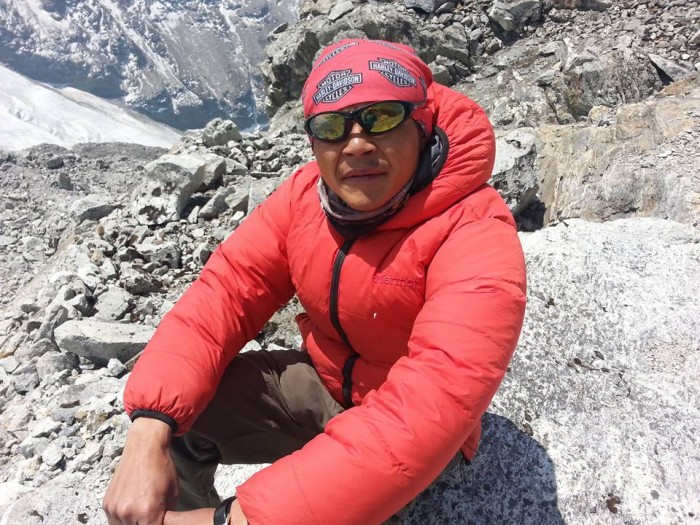The Annapurna Base Camp Trek (ABC) is one of the most iconic and rewarding trekking experiences in Nepal, offering a spectacular blend of natural beauty, cultural richness, and high-altitude adventure. Nestled at an altitude of 4,130 meters (13,550 ft), the base camp lies in the heart of the Annapurna Sanctuary, surrounded by majestic Himalayan peaks like Annapurna I, Machapuchare (Fishtail), Hiunchuli, and Annapurna South. Whether you're trekking solo, as a couple, in a group, or even considering a helicopter return, this guide covers everything — from itinerary options, distance, and difficulty, to detailed costs for Nepali, Indian, and foreign trekkers in 2025.
Why Choose the Annapurna Base Camp Trek in 2026/27?
With improved infrastructure, better connectivity from Pokhara, and increasing safety standards, Annapurna Base Camp Trek 2025 promises to be more accessible and enriching than ever. Himalayan Adventure International Treks offers curated Annapurna Base Camp Trekking Packages tailored for solo travelers, couples, groups, and helicopter tours.
The ABC Trek distance varies depending on the route, but typically ranges between 67 km to 115 km round trip. Starting from Nayapul, Ghandruk, or Jhinu Danda, the ABC trek route ascends through terraced fields, lush rhododendron forests, and traditional Gurung villages.
Pokhara to Annapurna Base Camp Distance: ~37 km one-way via Jhinu Danda.
ABC Trek Route: Pokhara – Nayapul – Ghandruk – Chhomrong – Bamboo – Deurali – Machapuchare Base Camp (MBC) – Annapurna Base Camp (ABC).
ABC Trek Itinerary 5 Days (Rapid):
-
Pokhara – Ghandruk – Chhomrong
-
Chhomrong – Bamboo – Deurali
-
Deurali – MBC – ABC
-
ABC – Bamboo – Jhinu Danda
-
Jhinu Danda – Nayapul – Pokhara
Annapurna Base Camp Trek Difficulty: Is the ABC Trek for Beginners?
Many wonder, “Is Annapurna Base Camp for beginners?” The answer is yes — with proper preparation. The trek is considered moderately difficult and suitable for those with average fitness levels. No technical climbing is involved, but you’ll need to manage altitude and continuous uphill/downhill walking.
-
Max altitude: 4,130 meters (13,550 ft)
-
Daily walking hours: 5–7 hours
-
Best months: March–May & September–November
Annapurna Base Camp Trek Cost in 2025/26
-
The cost varies depending on your group size, trekking style (guided vs solo), and services included. A typical Annapurna Base Camp Trek cost in 2025 ranges from USD 450 to USD 1,200 per person.
Solo Annapurna Base Camp Trek Cost
Group Join Annapurna Base Camp Trek Cost
Helicopter Annapurna Base Camp Trek Cost
Couple ABC Trek Cost
Annapurna Base Camp Trek Cost for Indian Citizens
Annapurna Base Camp Trek Cost for Nepali Citizens
Pokhara to Annapurna Base Camp by Car
How Much is the Permit for the Annapurna Base Camp Trek?
Annapurna Base Camp Trek Packages Offered by Himalayan Adventure International Treks
We offer a variety of Annapurna Base Camp trek packages in 2025:
Classic 12-Day ABC Trek
2. Short 7-Day ABC Trek from Pokhara
ABC Trek with Helicopter Return
Luxury Annapurna Base Camp Trek
ABC Trek with Poon Hill
Annapurna Base Camp Itinerary Options
Standard 10-Day Itinerary
Day 01-02:Kathmandu - Pokhara – Nayapul – Ghandruk
Day 03: Ghandruk – Chhomrong
Day 04: Chhomrong – Bamboo
Day 05: Bamboo – Deurali
Day 06: Deurali – ABC
Day 07: ABC – Bamboo
Day 08: Bamboo – Jhinu (Hot Spring)
Day 09: Jhinu – Nayapul – Pokhara
Day 10: Pokhara - Kathmandu
Day 11: Departure
ABC Trek Itinerary 5 Days (Fast-paced)
Pokhara – Jhinu – Bamboo
Bamboo – Deurali – MBC
MBC – ABC – Bamboo
Bamboo – Jhinu
Jhinu – Pokhara
How Much Does the Annapurna Circuit Trek Cost?
Although a different route, many travelers also ask: How much does the Annapurna Circuit Trek cost?
-
Budget trek (14–18 days): USD 700–1,000
-
Includes transportation, permits, accommodation, and food.
-
Popular add-ons: Tilicho Lake, Thorong La Pass
ABC Trek Map and Navigation
We provide detailed ABC Trek maps, highlighting:
-
Key altitudes and rest points
-
Distance between villages
-
Side trips (e.g., hot springs, viewpoints)
Guided treks also include printed or digital GPS maps for accuracy and safety.
Why Book the ABC Trek with Himalayan Adventure International Treks?
-
Experienced local guides with deep knowledge of terrain and culture
-
Flexible itineraries and emergency support
-
Customizable packages for solo, couples, groups, or helicopter tours
-
Affordable pricing with no hidden costs
-
Sustainable trekking practices and support for local communities
Whether you're a solo traveler calculating the Solo Annapurna Base Camp Trek Cost, a duo exploring the Couple ABC Trek Cost, an Indian tourist wondering about the Annapurna Base Camp Trek Cost for Indians, or a local Nepali asking How much does it cost to go to ABC? — This adventure is achievable for all in 2025. The unforgettable views, cultural immersion, and Himalayan challenge make it worth every step.
So, how much is ABC Trek?
The real answer lies not just in money, but in memories you'll make — and Himalayan Adventure International Treks is here to ensure your journey is safe, scenic, and seamless.
For updated 2026 bookings, group departure dates, or personalized Annapurna Base Camp trek packages, contact Himalayan Adventure International Treks.

 Plan Your Trip Now
Plan Your Trip Now 




